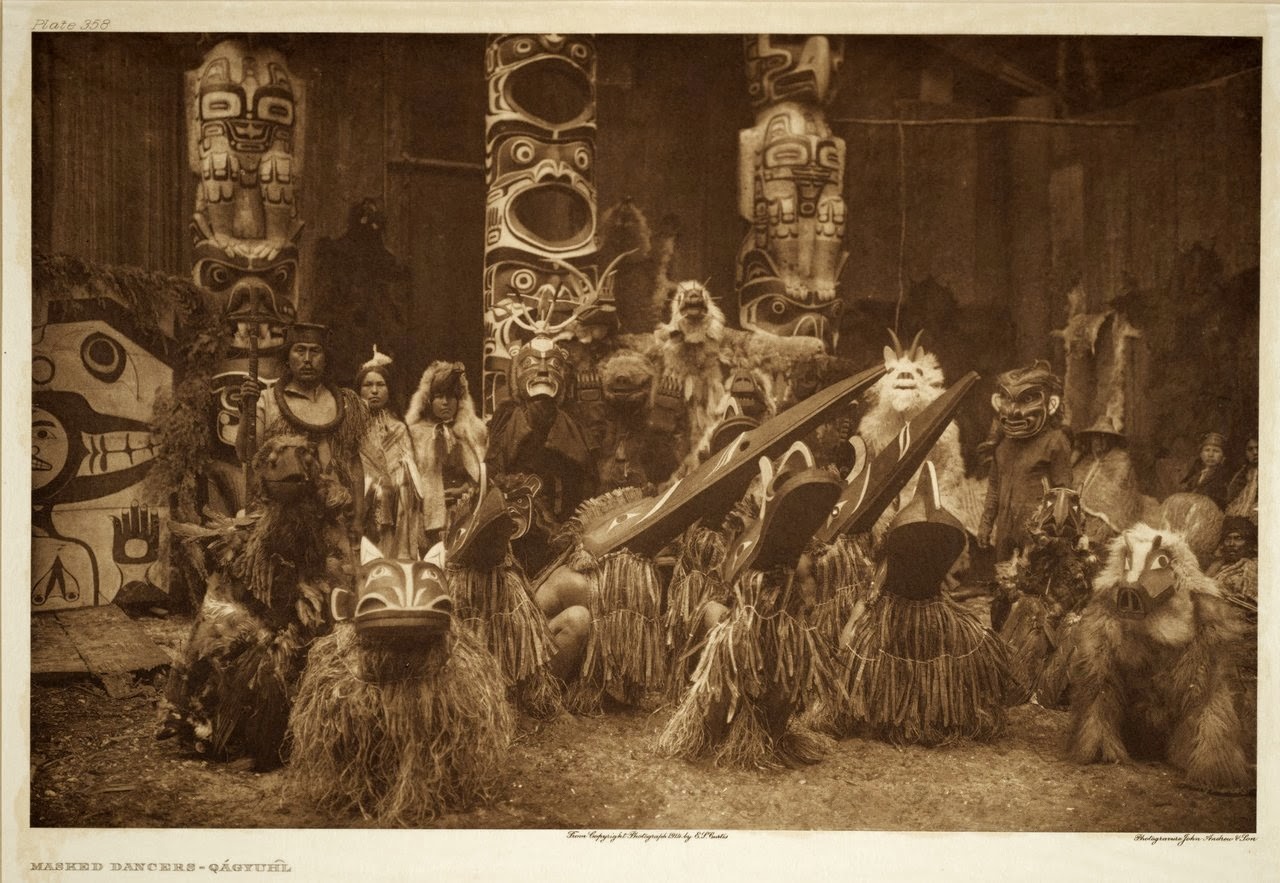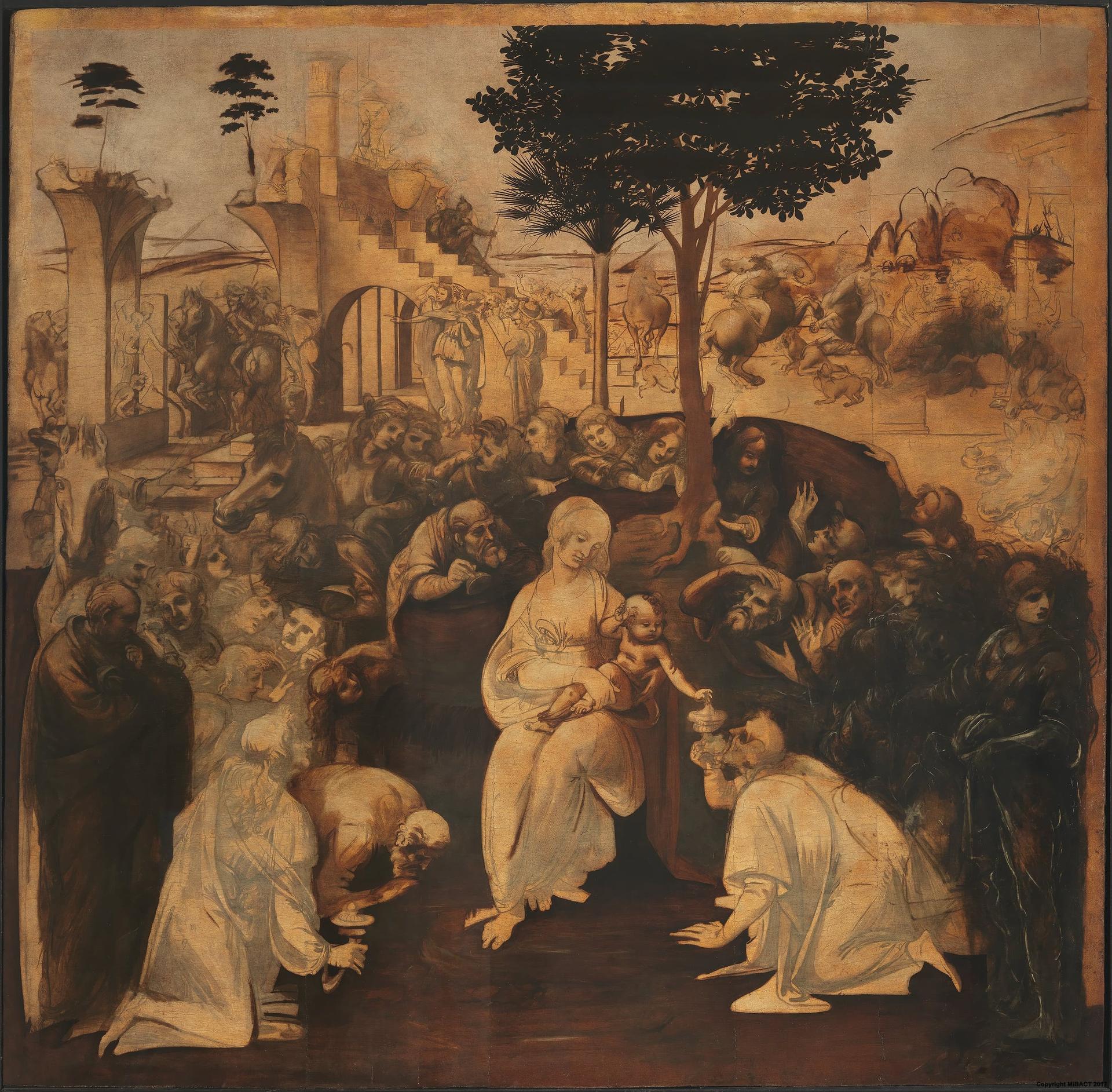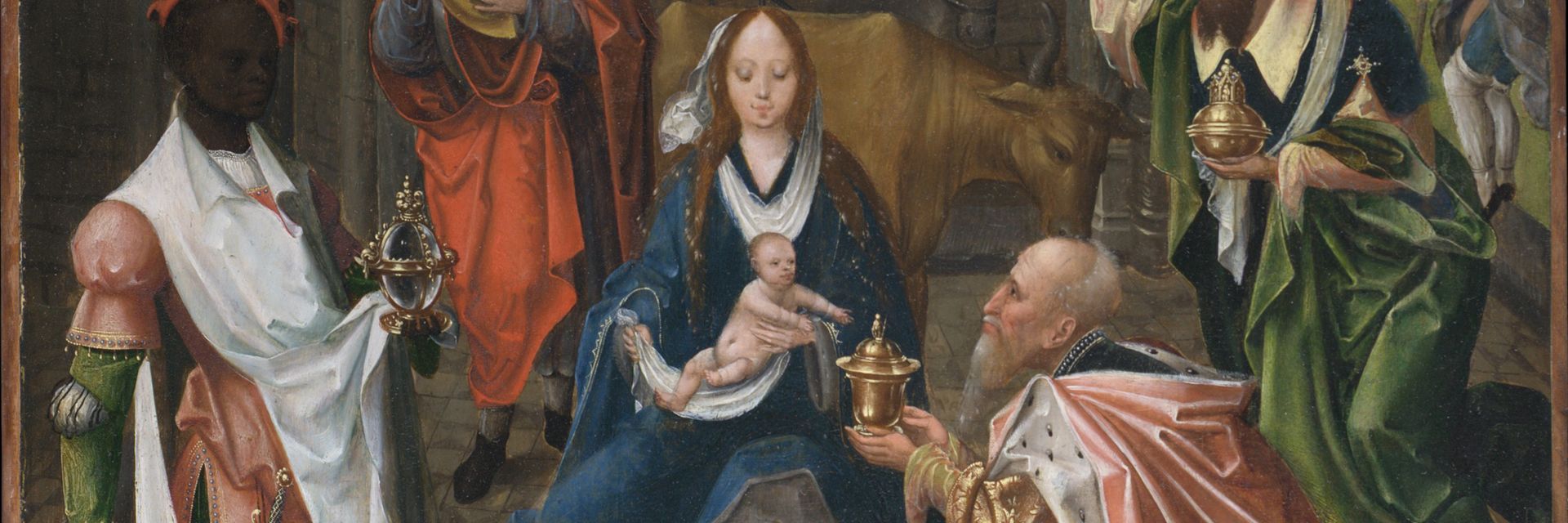Chimps do it, and so do we! Among humans, gifts have been important messages of caring, concern, reverence, and revelry in virtually all cultures and eras, from ancient Egypt to the present day. Gifts have been offered to gods, kings, dignitaries, and respected persons in all walks of life. Some Native American tribes even participate in an age-old ceremony called potlatch that culminates in a competition to see who can destroy the most items of value. Gift-giving has a very long, varied, and fascinating history, indeed. Read on to learn more.
◊
As the Bible says, it’s better to give than to receive. But you might be surprised to learn that the offering of gifts predates even that nugget of wisdom. Gift-giving rituals have been found in the earliest social groups. Anthropologists have noted that male chimpanzees often offer gifts of food to female chimps. It’s an easy guess that this display of sharing might be associated with a chimp’s sex drive, but scientists who study them explain that the actual purpose of this gift-giving is to form bonds and assist in trust-building.
This common desire – found among all primates – to reach out and develop trusting bonds may be based on the need for pack survival, but it goes far beyond this. A stable troop of monkeys with healthy bonds formed of mutual interdependence has a higher survival rate and is more likely to thrive in their environment.
Love, concern, and the desire for reciprocity, then, seem to form the basis of why we humans – like our relatives, the chimpanzees – place a value on giving gifts. It’s not always about the recipient. Often the ritual of gifting is really about the giver. Why do people offer gifts to others? Let’s examine gift-giving in several ancient cultures to find out.
Gift Like an Egyptian
Archaeologists have uncovered ample evidence of gift-giving in studies of ancient Egypt. Most of the giving, however, consists of gifts to the Egyptian deities. These offerings were considered essential to the ongoing life and well-being of the gods, who were assumed to be alive on another plane. And, actually, these daily gifts – usually food or an object of veneration – were distributed to the priests who attended these temples of the gods, making them the real beneficiaries of the public’s largesse.
This sort of funerary sustenance for the afterlife is widely known through the discoveries of the tombs of royalty such as the boy-pharaoh Tutankhamun and others. It was a tenet of faith that even in death, the bodies of the departed still contained something called ba, which served as the post-life spiritual link between life and afterlife. So these dead dignitaries, and others to a lesser extent, were gifted with all manner of items that one might find useful on long nights in the great beyond.
Pharaohs, who were believed to be imbued with the spirit of the divine when they were crowned kings, were given honorary gifts on the day of their elevation in status, and this day became known as the pharaoh’s birthday.

Imagine the bounty amassed to accompany the pharaohs to the afterlife. All that gold, just to make life more comfortable, and only available to the deceased! (Source: Mark Fischer, via Wikimedia Creative Commons)
Common people, such as merchants, farmers, or traders, also participated in a kind of gift exchange we’re likely to recognize. In order to initiate a new relationship or celebrate an important event, it was customary to present an object of value with some benefit for the recipient. And the recipient as well would participate by giving something of roughly equal value.
This process has been termed “reciprocal gift-giving” and is separate from bartering because neither profit nor gain was a motive. Though the overall value of these gifts contributed to the local economy, the purpose was to create a more unified society, with trust and concern being paramount.
Ancient Greece and Rome – Gifts for the Gods
The culture of Athens in the time of the Greek Empire is rife with references to, and images of, gift-giving. Homer’s Odyssey stressed the importance of gift-giving in society. Among the ancient Greeks’ sacred duties was the principle of xenia, which bonded Greek citizens through the concept of hospitality (a rough translation of the term).
The familiar practice of mutual gift-giving was included in the concept of xenia. It was a duty to be kind and generous to fellow people, not only other Greeks but all humanity. Extending gifts to strangers was a force for social good, whether the gift was material or, like temporary shelter, non-material. And the recipients had their own responsibilities: to be grateful, respectful guests and to prepare to reciprocate should they one day be hosts. (This interpersonal custom has parallels in the cultures of both Judaism and Islam.)
Ancient Romans were no strangers to giving gifts, especially in regard to celebrations of the gods, such as Saturnalia. This annual feast honored the god Saturn during the midwinter solstice with a period of rejoicing and carousing, along with the practice of giving small gifts to family and friends. This happy period predated the Christian era by centuries, and was only banned in the 4th century CE when Christianity became the official religion of the Roman Empire. Certain of these traditions carried over to the celebration of Christmas.
The Gifts of the Bedouins
For thousands of years, from before the heights of Egyptian, Greek, and Roman cultures, Bedouin tribes have roamed the deserts of Arabia. For these peripatetic groups, sharing gifts was, and still is, an important part of social bonding. Prior to the spread of Islam, the Bedouin customs surrounding gift-giving served to unite kin groups to one another and to foster a broad network of relationships.
The gift-giving “cycle” of proffering items of value to fellow roving tribes, and receiving gifts of value in return, allowed Bedouins to express their generosity. A tribe could share a token of its accumulated wealth as a means to reduce tensions with another tribe. Consider it good manners – and good diplomacy.
Gift-Giving in the Islamic World
The Bedouins, and all of the far-flung Arab culture, were profoundly changed by the spread of the Muslim faith. Islam grew within the Arab world – and then, far beyond – after it was founded in the 7th century CE. Its founder, Muhammad, also called the Prophet, spoke frequently about the value of gift-giving, not only to sustain the Islamic Pillar of charity (zakat) but in daily life as well. According to the Prophet, accepting a gift not as charity, but as a present implying love and good wishes, is a blessed duty, as it strengthens social ties and aids in deepening a sense of well-being.
In the Hadith, or Islamic traditions, the Prophet Muhammad is reported to have said, “Give each other gifts and you will love each other.”
There’s a little catch, though, that we’ve seen before in this history. Muhammad taught that receiving a gift confers upon its recipient the obligation to return a gift of equivalent value at some later time. Since the act confers good tidings on the giver, it’s truly a blessing to give.
Gift-Giving Rituals in Traditional Asian and Pacific Cultures
The Maori culture of the South Pacific also engaged in the exchange of gifts, which they viewed not as acts of charity but, as in Islam, an ennobling practice. In their society, the belief was (and is) that objects presented as gifts embody the spirit and vital essence of the gift giver, and was to be cherished by the recipient.
In Maori culture, if a gift is regifted, the new recipient owes a return gift, not to the person who repurposed the gift for them, but to the original gifter, whose essence is spiritually entwined with the gift.
Japan’s ancient culture developed a formal gift-giving culture based on customs and traditions. This culture, which extends to today, focuses on ceremonial occasions, such as births, weddings, and annual seasonal celebrations. At these times, the presentation of the gift, rooted in cultural history, becomes more important than the gift itself.
In China, where the teachings of Confucius have held sway since the 5th century BCE, gifts are meant to maintain harmony with family and friends. Gifts allow givers to demonstrate their respect toward elders and superiors, and are essential in building business relationships. As in Japan, what’s behind the gift (e.g., respect, commitment, admiration) is more important than its value.
The Native American Potlatch – Up in Smoke
Native American tribes, particularly those of the Northwest Pacific region, may have taken the idea that the “value” of possessions is ephemeral to a fascinating extreme. They have engaged for centuries in a ritual they call Patshatl, or, in Americanized form, potlatch. This traditional display, exchange, and even immolation of wealth was part of a ceremonial feast involving two or more tribes. The potlatch was part bacchanale and part competition to demonstrate who was affluent enough to give away or destroy significant portions of their accumulated wealth.

Native American tribes of the Pacific Northwest pose during a ceremonial potlatch. (Credit: Edward S. Curtis, via Wikimedia Commons)
A potlatch marked an important event in the tribe’s history, such as a marriage, funeral, or birth. It could last several days and include feasting, dances, and other cultural displays. The central event of the potlatch was the ritual exchange of gifts, as well as the fiery immolation in a big bonfire of other valued items. Such items for exchange could include horses, slaves, blankets, decorative items, firearms, and other valuables.
The bonfire of the items was the biggest moment, and tribesmen and their leaders set aflame as many valued items as they could bear to lose. This was the defining moment – the tribe that gave away and destroyed the most gained the most prestige and power. If you didn’t measure up as the flames climbed higher, you lost face.
Giving and Receiving in Europe and the U.S.
Back in Europe, as the Holy Roman Empire expanded in the early years of the Christian era, the traditions of Rome, both Christian and pagan, rolled along with it. As Europeans entered the Christian faith, celebrations of the Christmas season (aspects of which descended from the pre-Christian Roman Saturnalia) came to be widespread.

Leonardo da Vinci's early, unfinished Adoration of the Magi hangs in the Uffizi Gallery, Rome. (Source: Google Art Project, via Wikimedia)
Early Christian celebrations included the replication of the three Magi’s small but meaningful gifts presented to the Christ Child. Originally, this gift-giving was between adults, with people offering valued items to their superiors or their royal rulers.
Who was the real Grinch in early America? The Puritans, of course! Yes, the founders of the first colonies were so offended by displays of the Christmas season in Britain, they banned the observation of the holiday entirely. It wasn’t until 1680 that the ban was lifted, and American gift-giving began in earnest.
St. Nicholas, also from the 4th century, is a historical figure who presented gifts to children, not as charity, but as a blessing. This saintly gesture had obvious appeal, and, after the Protestant Reformation, gift-giving came to be centered on children. Customs surrounding the primary role of children as Christmas gift recipients spread to the U.S. in the 19th century.
Gift-Giving from the Heart and Through the Ages
Gift-giving has become so entrenched around the world that virtually every society has incorporated the presentation of gifts into its cultural rituals and customs. In fact, it’s as ingrained in us as it is among chimpanzees. Remember this the next time you’re in the market for a “perfect” gift for that “special someone.” So choose well – as we’ve learned, for many, a gift can be more revealing of the giver than it is of the recipient.
Ω
Kevin Martin is Senior Writer for MagellanTV. He writes on a wide variety of topics, including outer space, the fine arts, and modern history. He has had a long career as a journalist and communications specialist with both nonprofit and for-profit organizations. He resides in Glendale, California.
Title image: The Adoration of the Magi, unknown painter, ca. 1520 (Source: Public Domain, via The Metropolitan Museum)


